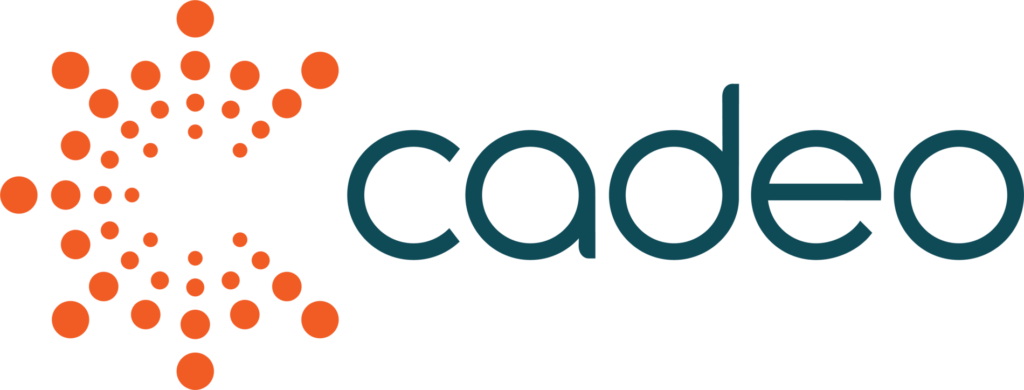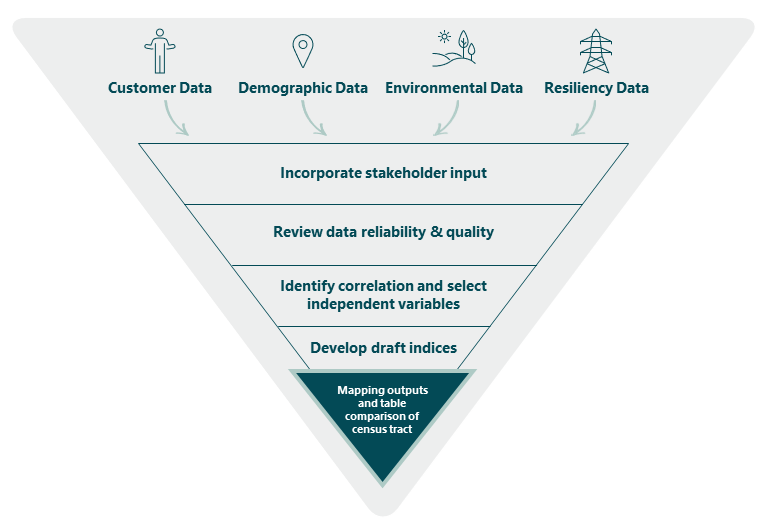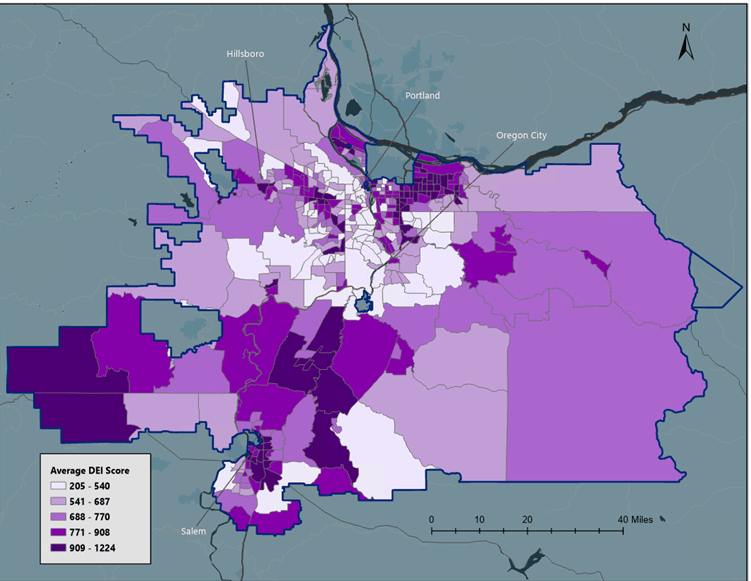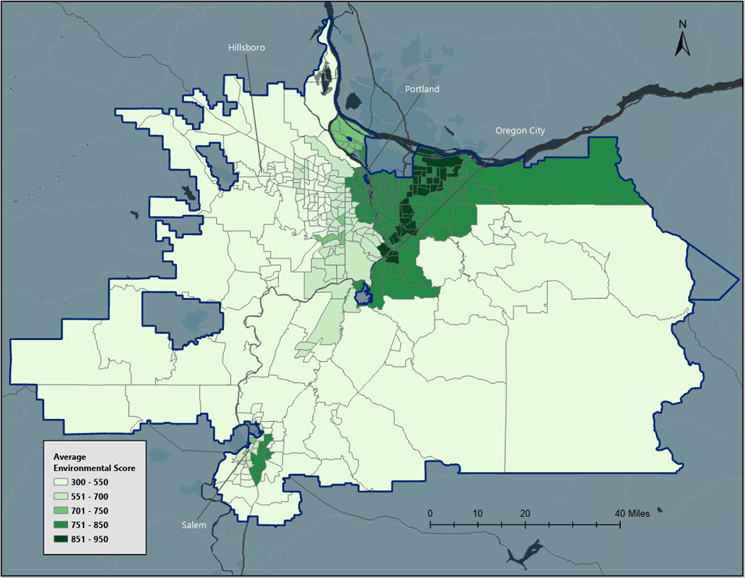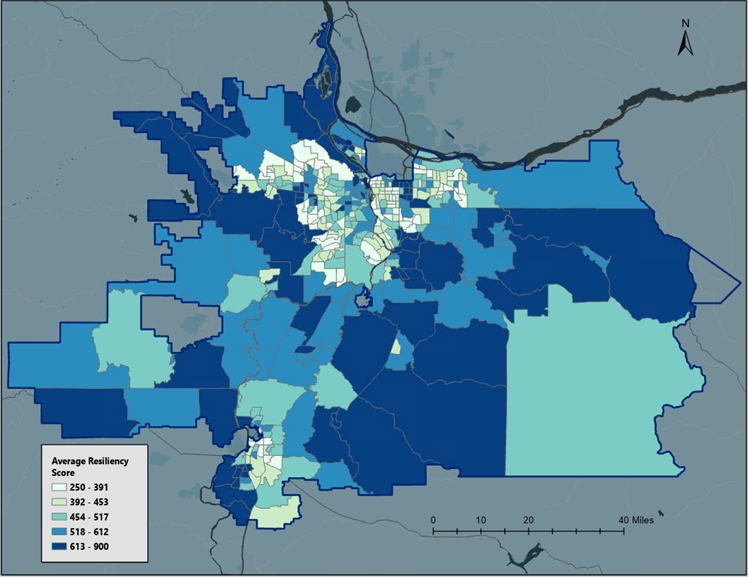In 2022, Cadeo developed an approach for Portland General Electric (PGE) to consider diversity, equity, and inclusion (DEI); environmental; and resilience parameters within their distribution system planning process. Cadeo created a set of indices to understand the geospatial distribution of these parameters, helping PGE identify and prioritize underserved communities within their territory.
The REDI tool developed by Cadeo can aid future resource and program planning to target and direct benefit towards priority communities.
In building this tool, Cadeo developed an approach that accounted for a variety of public and utility/customer-specific data sources and input from PGE-led community engagement workshops. We also applied statistical techniques for variable selection supporting index development. Finally, we developed a set of three indices to account for the composite effect of various criteria defining DEI, environmental, and resilience parameters.
REDI allows for increased flexibility and deeper insights.
One of the benefits of the REDI tool is its increased flexibility. We’ve developed a scorecard approach that allows for more control over variable weighting and the ability to run sensitivity analyses. In turn, users can see how key variables influence the index distribution. This allows for stakeholder input or state policies to be reflected in the mapping and ranking of priority areas. The mapping can then be updated as needs change and policies update over time. Additionally, given the underlying scoring approach, the REDI tool can provide increased granularity. The tool assigns these indices at a range of geographic levels, from Census Tracts to Block Groups, substation and feeder levels, and down to a household level. This provides deeper insights for both distribution system and program planners to account for the array of factors that impact localized populations.
REDI identifies underserved areas, leading to equitable and impactful program improvements.
Finally, Cadeo has used REDI with other clients to identify areas with high concentrations of eligible customers and areas historically underserved by specific programs. The results subsequently inform improved program targeting and outreach. By incorporating historical program delivery information, we can assess geographies with high program penetration compared to those with low participation. These geographic trends can highlight barriers to program participation, gaps in delivery capacity or reach, and opportunities for design and delivery improvements that can increase access to underserved communities. These types of gap analyses and needs assessments can therefore be increasingly helpful for utilities. They can help with identifying disadvantaged communities, thus prompting changes to outreach, engagement with local partners, and improved services aimed at promoting localized grid resiliency, environmental benefits, and reduced energy burden, among other impacts.
Further reading: Community Targeting Assessment memo for PGE (July 2022)
Graphics courtesy of: Portland General Electric, Distribution System Plan Part 2 – Appendix N. Equity Index and Community Targeting Assessment. 2022. https://assets.ctfassets.net/416ywc1laqmd/79djvul6i8euOIXwjj1ba5/ffb773d38fa86b08ad1c11f9c7058fff/DSP_Part_2_-_AppendixN.pdf
